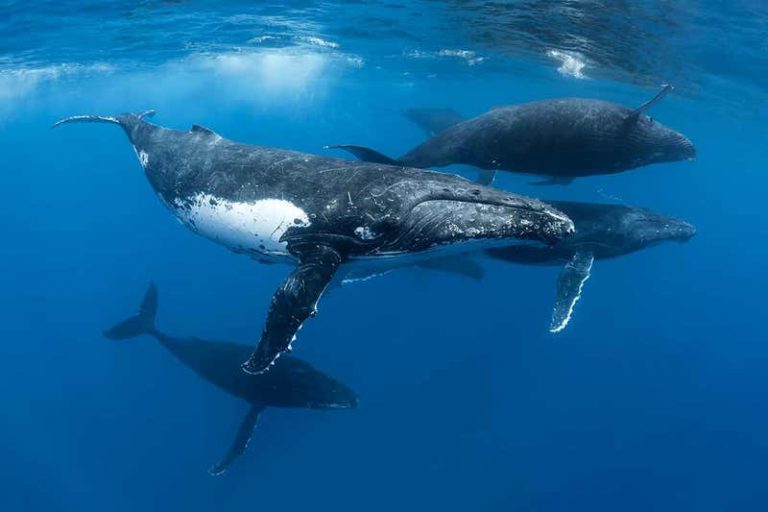Much like humans have accents, humpback whales’ songs have features that can indicate where they’re from. According to the New Scientist, new research has identified three song types among humpback whale singers in the Pacific Ocean.
These whales’ songs can indicate where they originally came from and can change as they pick up new tunes from whales they encounter from different regions. These songs ‘morph’ as whales pass them along, adding their own riffs or a few notes.
Whale songs are made up of units that build together to make a phrase, and several phrases that repeat form a theme. A few themes are sung in a set order to form a song.
“Our best analogy is hit human fashion and pop songs,” Ellen Garland at the University of St Andrews in the UK told the New Scientist. “We can pinpoint a population a whale has likely come from by what they are singing.”

Whale song reveals where the animal came from. New Scientist.
She and her team recorded the songs of humpback whales passing near the Kermadec islands in the South Pacific, which is a migratory stop-over point. They also recorded whale songs at spots where whales congregate to feed and breed across the western and central South Pacific.
Based on the percentage of similarity between the recordings, the team could pinpoint which islands the whales originated from. These findings were confirmed with genetic and photographic identification of the singing whales, with most coming from New Caledonia, Niue and the Cook Islands.
Researchers think it is likely there are other places where whales from different regions can meet and pass on their songs, either on migratory routes or in feeding grounds.
Image source: Pixabay
You may also like
Related Posts
China’s National Health Commission has published a list of controversial coronavirus treatments that have animal...
read more
Warmer sea temperatures in the summer months, especially in February, were recorded and are believed...
read more
The latest report indexing the world's happiest countries has highlighted the important role of...
read more